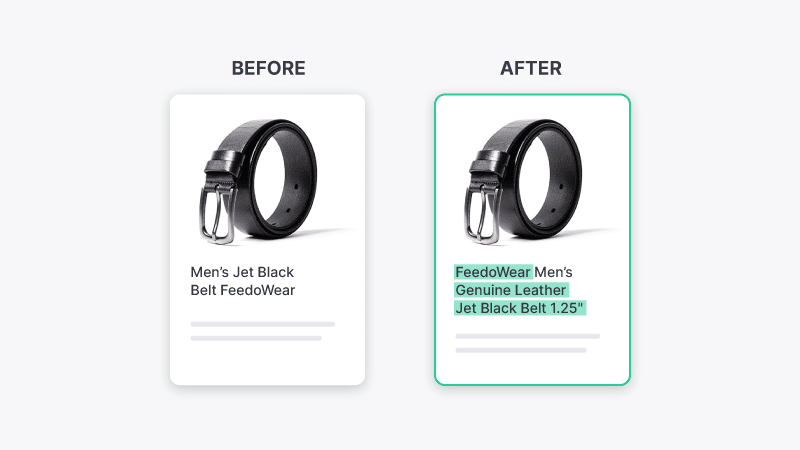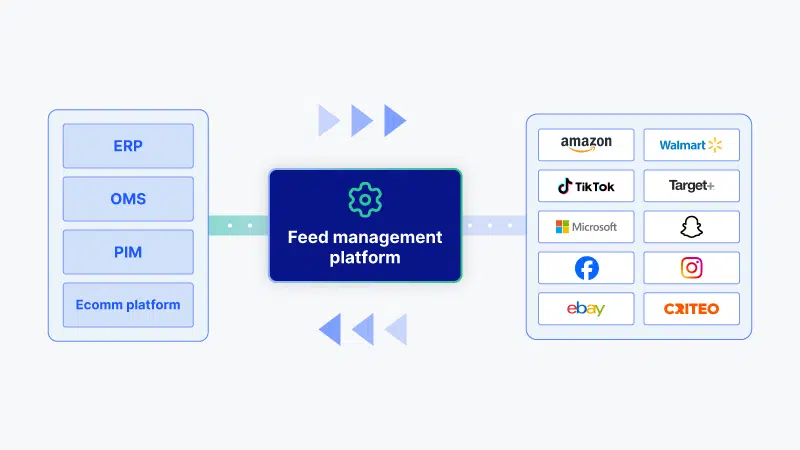Brands want to invest in ecommerce, so what’s stopping them?
Investigating common obstacles to ecommerce investment and how to overcome them.

A recent Pattern survey of 300-plus executives revealed that 94% of them plan to maintain or increase their investment in ecommerce over the next six to 12 months.
What exactly does investment in ecommerce look like? Those surveyed had a handful of top-priority areas in mind:
Nearly 60% plan on increasing their investment in product imagery, video and copy for online listings
Companies that invest in best practices for images, video and product listing copy often see meaningful performance improvements. Shopping channels also continue to require more robust data from brands and retailers to create better product listings, so investment in this area is must.
Product images

Images are crucial to a high-performing product listing. They need to quickly convey how a product functions and its main features.
Brands should provide high-resolution images to enable zoom functionality on most marketplaces, like Amazon and Walmart. They should also provide lifestyle images that tell a story or show their product in use, and infographics that highlight a product’s unique selling points.
Video
Consumer engagement with video content has greatly risen, especially for short-form video, which has become popular across social platforms.
- More than 65% of users find short-form videos the most engaging type of content, according to a 2023 Sprout Social report.
- Nearly 75% of consumers prefer to watch short-form videos when learning about a product or service, according to a Wyzowl survey.
Copy
Special care needs to be given to product listing copy. Product titles should contain keywords that ensure the right listings appear for specific product searches.
On marketplaces, product descriptions are also very important. They might take a lot of manual effort to optimize if you’re editing them individually (you shouldn’t — we explain a better way later), but the extra attention makes a difference!

More than 45% of global shoppers say accurate product descriptions influence them the most when shopping online, according to a 2023 VML study. Product descriptions ranked higher than other types of content like:
- High-quality images (32%).
- Brand (32%).
- Readability (23%).
- Video content (20%).
- Checkout speed (18%).
Product listing optimization increases click-through rate, return on ad spend, revenue and other vital metrics, allowing brands to scale effectively.
With high-quality product data, listings are more search relevant and consumers can confidently make purchase decisions. In addition to important customer-facing details, listings should have optimized back-end information, like accurate and granular product categorization.
More than 50% plan on increasing their investment in influencer marketing
Traffic and conversion rates for sellers on social commerce channels lean heavily on social tools like tagging posts, creating new posts consistently and promoting through influencers, which traditional marketplaces don’t offer.
Working with influencers can increase brand awareness, customer engagement and orders on social commerce channels like Facebook, Instagram and TikTok, where brands sell directly to consumers via native checkout.
Some channels like TikTok even have dedicated marketplaces where brands can partner with popular influencers to reach a broader audience.
What’s stopping brands from scalable ecommerce growth?
Every business aims for scalable growth, but it’s not easy to attain.
Here’s what those surveyed named as their biggest obstacles; luckily, none of them are insurmountable.
Order and inventory management
One in three brand leaders say rising shipping costs and an inability to maintain inventory levels impede growth.
To reduce costs, businesses can streamline key processes like inventory management and order routing.
Feed management platforms specialize in moving and improving data across systems, shopping channels, and other ecommerce platforms. Some feed management solutions have order management technology that automates order synchronization and data translation across multiple channels, ensuring that inventory levels are always accurate and that orders are available to process in a centralized system.
For example, a retailer with a BigCommerce store and a presence on Amazon, Walmart and eBay could use a feed management platform to pull in new orders from those marketplaces, process them within BigCommerce, and then send tracking information back to the marketplaces.
Feed management platforms can also reduce the risk of overselling during promotions by using inventory buffers, which allow brands to control how much inventory is displayed on a marketplace. This comes in handy with low inventory or fast-moving products.
Brands can also look into flexible methods of fulfillment, like turning their brick-and-mortar stores into fulfillment centers for online orders.
Unauthorized sellers and distributors
A quarter of brand leaders say they struggle to get unauthorized sellers and distributors under control.
A good first step for businesses to solve this is to protect their IP and reputation by registering their trademarks with online marketplaces, whether they currently sell there or not. This can give them more control over product listings that feature their products.
Integrating with new channels
Another quarter of those surveyed struggle to expand to new shopping destinations.
The cost of creating and maintaining integrations with new channels can be prohibitive. It takes additional resources to maintain product listings on those channels.
One logical solution is to integrate with a single product feed management platform that has direct connections to multiple channels and dedicated support.

Having the right tech for data synchronization is also important. Keeping product information up-to-date across a business’ tech stack and sales channels is necessary to keep the order defect rate low on marketplaces, provide customers with accurate information they can rely on and prevent pricing discrepancies that can cause seller account penalties.
Lack of resources
Half of business leaders say they have just two to five people on their teams, making them feel understaffed to take on additional ecommerce projects.
For these companies, fully managed services can make life a lot easier. Some platforms provide dedicated teams that manage crucial ecommerce processes for businesses and advise them on feed and channel best practices.
This hands-on support results in significant time savings. Feedonomics customers spend 43% less time per week on feed management, according to a 2023 survey.
Feedonomics also reduces the number of weekly product errors, warnings and suspensions by nearly 50%. When errors do occur, its full-service team helps resolve them 70% faster, which keeps valuable revenue streams from getting blocked.
Learn more about how Feedonomics can help you overcome these growth obstacles and maximize your ecommerce investment.
Opinions expressed in this article are those of the sponsor. Search Engine Land neither confirms nor disputes any of the conclusions presented above.


